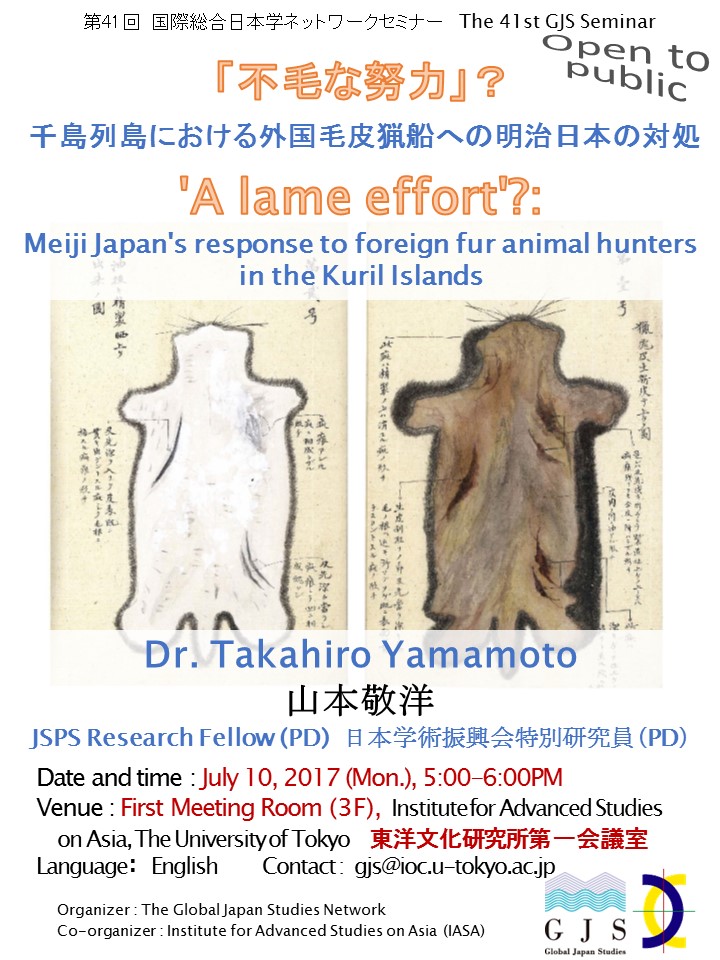The 41st GJS Seminar'A lame effort'?: Meiji Japan's response to foreign fur animal hunters in the Kuril Islands
| Date and time: | July 10, 2017 (Mon.), 5:00-6:00PM |
|---|---|
| Venue: | First Meeting Room (3F), Institute for Advanced Studies on Asia, The University of Tokyo |
| Speaker: | Takahiro Yamamoto (Japan Society for the Promotion of Science Research Fellow [PD] ) |
| Language: | English |

Abstract: In the 1870s and the 1880s, the Kuril Islands experienced a boom for fur animal hunting by vessels coming across the Pacific. Although seldom discussed outside the context of the Russo-Japanese territorial disputes, the Kuril Islands during this period witnessed complex interactions among the logic of territorial control, commercial lisencing and protection of marine animals. In contemporary Alaska and the Russian Far East fur animal hunting was delegated to a private enterprise, which suppressed other hunters by branding itself as a guardian of natural resources. In the Kuril Islands, officers of Hokkaido Colonization Office (Kaitakushi) faced a set of circumstances that led them to adopt a different approach. Instead of leasing the territory to a commercial entity Kaitakushi attempted to guard the coast on its own, but ultimately failed to prevent the foreign hunters from decimating the Kuril sea otters and fur seals. This paper argues that the apparent lack of commitment on the part of the Japanese in protecting marine animals from foreign hunters was a result of political and diplomatic considerations that served a larger agenda for the state. By taking a nationalist approach to the administration of the Kuril hunting grounds, Meiji Japan dealt with fur animal hunting not as a question of resource management but as that of mobility control.
Organizer: The Global Japan Studies Network (GJS)Co-organizer: Institute for Advanced Studeis on Asia (IASA)
Contact: gjs[at]ioc.u-tokyo.ac.jp



